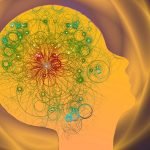Hormonal Equilibrium in Men: A Balancing Act
Rian Shah, ND
Ah, the conundrum of naturopathic doctors using testosterone replacement in men… I hear the struggle all the time, and feel the resistance. Since I feel like this is an amazing tool that can help people reach optimal health, I will attempt to explain how I approach hormone replacement therapy (HRT) by sharing a case study.
For the first 2 years of my career I trained with a primary care physician who specialized in bioidentical HRT. I was seeing patients every 15-30 minutes every day, all day long, for hormone replacement and management and treatment of age-related disease. The intensity of this experience helped me to quickly learn the nuances of hormone replacement, and I watched it change patients’ lives.
The symptoms of low testosterone (low T) vary widely. Most clinicians are triggered to think of low T when they hear low libido. But low libido is not the most common symptom. The most common cluster of symptoms I see in men with low T are fatigue, low muscle tone, depression, apathy, anxiety, joint pain, chronic inflammation, weight gain around the middle, breast development, and hot flashes.
Case Presentation
Mike was a 45-year-old man who presented with fatigue, obesity, depression, anxiety, hypertension, insomnia, and joint pain. He was newly retired and wanted to enjoy his retirement as he should; however, he was finding he was too exhausted and sluggish to do things he loved to do. His wife, at a separate appointment, told me he was hanging out in his man-cave all the time, drinking.
Mike’s goals were to lose weight, be stronger, be happier and have more energy. He was about 70 pounds overweight and had a lot of anxiety. He described it as almost obsessive-compulsive disorder (OCD) with repetitive behaviors. The severity of the repetition was new for him.
He was noticing gynecomastia and weight gain around the middle. His fatigue was crushing, at about a 3 out of 10. His energy was worse with exercise and food, and better with sleep and rest.
Mike was stress-eating, which wasn’t helping his weight; in particular, he was craving carbs and sugar and bread. He loved bread. I reminded him that carbohydrates boost serotonin and decrease cortisol in the blood. His food choices appeared to be self-medicating his stress and anxiety. We needed to get to the bottom of why he was experiencing so much stress.
Laboratory Work-up
With his first blood draw, I tested him for the following markers: CBC, CMP, vitamin D, B12, ferritin, estradiol, free and total testosterone, DHT, DHEA-sulfate, pregnenolone, PSA, TSH, free T3, free T4, TPO antibodies, and hs-CRP.* This is a pretty typical first panel for my male patients who are over 35 years of age. I also did food sensitivity testing on him. My thought process behind this initial workup was to look for endocrine imbalances, nutrient deficiencies, and food sensitivities so that we could understand what aggravating triggers might be preventing him from reaching his goals. This would allow us to create a truly integrative and multi-layered treatment plan.
Lab Results & Comments
What I found were several significant imbalances. His vitamin D (25-hydroxyvitamin D) level was 9 ng/mL – a pretty severe deficiency. (See Table 1 for baseline abnormalities). Thyroid-stimulating hormone (TSH) was suboptimal at 4.2 µIU/mL; free T3 and free T4 were within the normal range; and anti-TPO was normal. Mike did not have Hashimoto’s; however, his thyroid had slowed down, most likely because of his low vitamin D and obesity.1,2 His free testosterone was 5.4 pg/mL. His total testosterone was low at 196 ng/dL. However, I don’t normally look at total testosterone to drive any of my hormone decisions; we need to see the level of free hormone to know what is usable to the body. Estradiol was very high at 45 pg/mL. My goal for estradiol in men is between 20 and 30 pg/mL. Prostate-specific antigen (PSA) looked great at 0.6 ng/mL, and dihydrotestosterone (DHT) was very low at 10 ng/dL, most likely because his testosterone was at the lower end of range. Ferritin was in the normal range and his high-sensitivity C-reactive protein (hs-CRP) was elevated at 10.0 mg/L, most likely due to his obesity. Mike’s DHEA-S was very low, at 67 µg/dL; pregnenolone was also very low, at 32 ng/dL. Pregnenolone and DHEA provide the hormonal foundation for testosterone, as well as so many other hormones. If these values are suboptimal, testosterone will also typically be suboptimal. I have found that when estrogen is too high and testosterone is too low, weight loss is next to impossible. We needed to build up his foundation and balance his hormones.
Table 1. Abnormal Laboratory Markers at Baseline
| Biomarker (serum) | Baseline Results | Lab’s Normal Range |
| Vitamin D (25-hydroxy) | 9 ng/mL | 30-100 ng/mL |
| Total testosterone | 196 ng/dL | 291-598 ng/dL |
| Free testosterone | 5.4 pg/mL | 4.3-30.4 pg/mL |
| DHT | 10 ng/dL | 16-79 ng/dL |
| DHEA-S | 67 µg/dL | 35-241 µg/dL |
| Pregnenolone | 32 ng/dL | 23-173 ng/dL |
| Estradiol | 45 pg/mL | <dl-40 pg/mL |
| hs-CRP | 10 mg/L | <3.0 mg/L |
| TSH | 4.2 µIU/mL | 0.45-5.1 µIU/mL |
* DHT = dihydrotestosterone; DHEA-S = DHEA-sulfate; hs-CRP = high-sensitivity C-reactive protein; TSH = thyroid-stimulating hormone; <dl = < detectable limits
Food sensitivity testing showed strong reactions to dairy, egg, gluten, and almonds (all of which he ate daily – or drank, as the case may be, due to all the gluten-containing beer he was drinking).
We know that vitamin D deficiency causes physiological stress on the body,3 and animal studies have demonstrated that it is necessary for proper intestinal integrity.4 We also know that vitamin D is necessary for all of our hormones to be at their peak, including testosterone and thyroid. When my patients’ vitamin D is low, I usually see increased anxiety, depression, and fatigue as well.
So, at this moment in time, my goals were pretty simple: get his 25-hydroxyvitamin D up to 70-80 ng/mL as soon as possible (which is my goal for prostate protection in men and overall hormone support), support pregnenolone to bring up his DHEA, and support DHEA to support his endogenous testosterone. I also asked him to eliminate the offending foods for 4 weeks.
Andropause is a real issue. Mike’s testosterone, no matter how much protein and exercise he implemented, would most likely not rise to a place where he could break the “chicken vs egg” scenario of weight gain and hormone imbalance. The “anti-aging” range for free testosterone is around 15.0-18.0 pg/mL, which is where Mike’s metabolism should really kick in and his muscles should get the most from exercise. Despite this optimal range, we should never be number-chasers. Rather, as we slowly move his testosterone up, we should pay good attention to how he feels. If there is a benefit in raising his free testosterone a bit more because it makes him feel better, and the levels remain in a safe range, then I feel it is appropriate.
Treatment
I suggested to Mike that we start him on the following: vitamin D3, at a dose of 40 000 IU/day for 4 weeks (which is the amount I’ve observed is needed to get the level up to 80 ng/dcL; DHEA, 10 mg every morning; pregnenolone, 30 mg every night; a high-potency multivitamin; and food elimination for 4 weeks (per the foods he is sensitive to). We reviewed breakfast, lunch, and dinner options, and I helped him find substitutes. I reminded him that for optimal hormone balance, neurotransmitter function, and energy, he should have protein with each meal. For optimal blood sugar regulation, I advised him to not snack between meals because it keeps insulin consistently activated. We came up with a good plan and decided to follow up in about 3 to 4 weeks with a blood draw.
Four-Week Follow-up
Four weeks later, Mike came in for his first follow-up and told me he felt great! His energy had gone from about a 3-4/10 to a 10/10. He no longer needed naps during the day. His anxiety had dropped significantly. He told me he had cut his drinking in half. His sleep had improved, gas and bloating after meals were gone, and he had lost 5 pounds naturally without trying!
Mike’s labs looked better. His vitamin D was 76 ng/mL (while taking 40 000 IU/day); DHEA-S was 120 µg/dL; pregnenolone was 100 ng/dL; TSH had dropped to 3.6 µIU/mL; free testosterone had come up to 9.4 pg/mL; estradiol had increased to 56 pg/mL; and his hs-CRP had dropped to 5.0.
My interpretation of this pattern was that the vitamin D was improving his hormone levels and the food elimination was reducing his inflammation, which was also helping to improve his hormone balance. I also noticed that while supplementing pregnenolone and DHEA, his estradiol had increased along with his testosterone. He appeared to have very active aromatase conversion. I kept note that if we chose to give him testosterone, we would need to keep estrogen suppressed. At this point, I wanted to see how much these other measures alone could lower the estrogen.
Thoughts About Testosterone Replacement
I regard estrogen suppression in the beginning of bioidentical HRT as temporary because once testosterone has been optimal for a while and the patient is increasing his exercise and weight training, fat tends to decrease around the middle, and aromatase activity tends to diminish. Thus, the estrogen will start to fall even on the same dose of estrogen blocker, which is our sign that we can start to reduce the dose of the estrogen blocker.
This is when I find testosterone replacement to be most helpful. We know that Mike is still not enjoying the full benefits that balanced hormones can bring. We know that when hormones are balanced the body is much more inclined to lose weight (or, in Mike’s case, to continue to lose weight). He is still having issues with anxiety, despite improvement, he still has hot flashes at night, and his thyroid is still not in an optimal place for cardiovascular function or metabolism, in general. (In my experience, an optimal TSH level is 1.3 to 1.8; most importantly, we want the TSH to be where the patient is no longer exhibiting symptoms of low thyroid). Our initial treatment plan gave his body what it needed to start optimizing those hormones, and now we were in a position to use a lot less. We had optimized vitamin D, DHEA, and pregnenolone, which had given his body the foundation it needed to hold testosterone in place. As a side note, I have noticed that if we don’t first start with pregnenolone and DHEA, it is difficult to stabilize the testosterone.
If we truly believe that normal and optimal are 2 different things, we need to know the optimal level of serum hormone that make our patients feel great. One person may feel best at the higher end of range, and another feel better at the lower end. If we establish a reference point for a given patient, it also allows us to compare; if he is feeling bad, all of a sudden, we can look and see whether or not his hormone level is out of range for him.
Testosterone Therapy
Mike decided he would give testosterone replacement at try. I prescribed a transdermal testosterone cream, which he was to apply to the damp skin of his genitals every morning. I also required that he wash it off with soap and water after 8-10 hours so that his body could make his own testosterone at night. If it is not washed off, no matter where it’s applied, patients may experience testicular atrophy because their endogenous testosterone production shuts down.5
Knowing that even without the testosterone replacement, his estrogen was too high, I decided to prescribe an estrogen blocker – anastrozole, 1 mg. He was to take one-quarter of a tab twice a week. I have used diindolylmethane (DIM) many times as an estrogen blocker, and find it very helpful when estradiol is between 30-40 pg/mL; however, when estradiol gets too high, the DIM just doesn’t seem to work. I wanted him to use the anastrozole for 1 week before starting the testosterone, in order to keep estradiol from spiking.
Five Weeks Later
About 5 weeks later, Mike comes in beaming. He told me he felt like he was “18 again.” He was sleeping solidly, his libido was strong and consistent, his energy was high, and his anxiety was completely gone. He told me that he had completely stopped drinking and had hired a trainer; he was lifting weights 3 days a week and doing cardio 5 days a week. He had never felt better. He had lost about 5 more pounds. He told me that he felt optimistic about life and loved retirement because he felt like he could golf again, like he did when he was younger.
His blood labs reflected his mood. Vitamin D was 75 ng/mL; free testosterone was 19 pg/mL; estradiol was 20 pg/mL; DHT was elevated at 105 ng/dL; and his PSA was 1.2. Mike’s TSH was still not optimal at 3.0 µIU/mL. He denied any negative side effects of testosterone, although he was noticing increased urination at night that didn’t correlate with the amount of water he was drinking. This sounded to me like this might be associated with the elevated DHT.6 He mentioned that his and his wife’s libido were not in sync, and this was a little frustrating. So we decided to reduce his testosterone replacement from 0.3 ml to 0.2 ml, so that we can lower both the testosterone and the DHT just a bit.
While his energy was great, he felt like he still had a bit of mental muddiness. It was hard for him to find words, and sometimes he felt like he was “thinking through honey.” I decided to boost his thyroid a bit more by adding 25 µg levothyroxine. I chose this rather than dessicated thyroid because his free T3 had traditionally looked good; using dessicated thyroid might cause his T3 to come up too high. I have found that speeding up thyroid can also cause testosterone to come up a bit, so I decided to watch this by doing our next blood draw in about 3 weeks, just to be sure. He left feeling great.
Three Weeks Later
In 3 weeks, Mike’s TSH was down to 2.2 µIU/mL; this is still far from what I consider optimal, but he said his mental energy was back and he no more clarity issues. His free testosterone was down to 16.5 pg/mL, and his DHT was down to 75 ng/dL and he had no more urination frequency. His PSA had come down as well, at this point 0.6. He and his wife were in sync. He had been exercising regularly and had lost 5 more pounds. This is reflected in Mike’s estradiol, which now – on the same dose of anastrozole – was down to 15 pg/mL. So, we took him off the anastrozole and moved him to DIM. Now we talked about reintroduction of foods, which he was reluctant to do.
Closing Comments
Mike has been my patient for 3 years now and continues to feel amazing. Once in awhile we have to tweak hormone dosing a bit, but we are keeping on top of it; checking his hormones every few months makes it easy to see why he might not be feeling his best. He is now off of his blood pressure medication, most likely because he has lost so much weight.
There have been a few times in my career that I have moved from compounded testosterone to a synthetic topical testosterone because a patient’s insurance wouldn’t cover compounded hormones; however, in all of those cases I have never been able to get the patient’s free testosterone into a range that is therapeutic. There have also been a few times when I have prescribed injectable testosterone because topical testosterone has failed to raise the testosterone level. It is important to have all options available and to know when to pull from them. If we are measuring correctly and frequently, and keeping close contact with our patients, testosterone replacement can be life-changing.
 Rian Shah, ND, maintains a practice (Cascade Integrative Medicine) in Issaquah, WA, specializing in anti-aging medicine, bioidentical hormone replacement, thyroid imbalance, and heart disease. She graduated in 2004 from Bastyr University and since then has worked for Doctors Data Laboratory, Longevity Medical Clinic, and is in a collaborative practice with other specialties. When not seeing patients, she spends time in the mountains with her husband and their 2 young children. For information, consult her website (www.CascadeIntegrativeMedicine.com) or email her at [email protected].
Rian Shah, ND, maintains a practice (Cascade Integrative Medicine) in Issaquah, WA, specializing in anti-aging medicine, bioidentical hormone replacement, thyroid imbalance, and heart disease. She graduated in 2004 from Bastyr University and since then has worked for Doctors Data Laboratory, Longevity Medical Clinic, and is in a collaborative practice with other specialties. When not seeing patients, she spends time in the mountains with her husband and their 2 young children. For information, consult her website (www.CascadeIntegrativeMedicine.com) or email her at [email protected].
References:
- Mackawy AM, Al-Ayed BM, Al-Rashidi BM. Vitamin d deficiency and its association with thyroid disease. Int J Health Sci (Qassim). 2013;7(3):267-275.
- Muscogiuri G, Sorice GP, Mezza T, et al. High-normal TSH values in obesity: is it insulin resistance or adipose tissue’s guilt? Obesity (Silver Spring). 2013;21(1):101-106. Available at: http://onlinelibrary.wiley.com/doi/10.1002/oby.20240/pdf. Accessed September 8, 2015.
- Wentz LM, Eldred JD, Henry MD, Berry-Caban CS. Clinical relevance of optimizing vitamin d status in soldiers to enhance physical and cognitive performance. J Spec Oper Med. 2014;14(1):58-66.
- Assa A, Vong L, Pinnell LJ, et al. Vitamin D deficiency promotes epithelial barrier dysfunction and intestinal inflammation. J Infect Dis. 2014;210(8):1296-1305.
- Rhoden EL, Morgentaler A. Risks of testosterone-replacement therapy and recommendations for monitoring. N Engl J Med. 2004;350(5):482-492.
- National Institute of Diabetes and Digestive and Kidney Diseases. Prostate Enlargement: Benign Prostatic Hyperplasia. Updated September 24, 2014. NIDDK Web site. http://www.niddk.nih.gov/health-information/health-topics/urologic-disease/benign-prostatic-hyperplasia-bph/Pages/facts.aspx. Accessed August 1, 2015.










